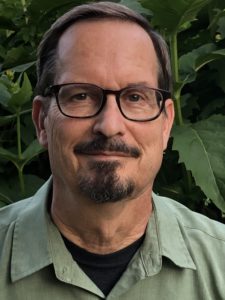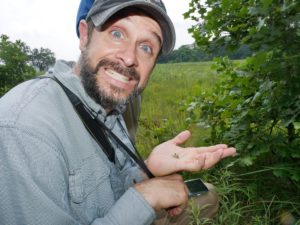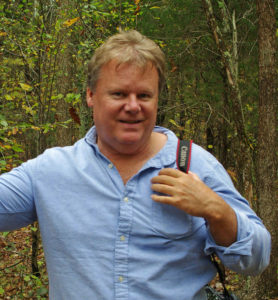 Speakers
Speakers
Paul Rothrock
Charles Deam, The Great Hoosier Botanist
Paul Rothrock is an emeritus professor from Taylor University and the emeritus associate curator from Indiana University. His efforts at digitizing IU’s Deam Herbarium brought him into close contact with the legacy of the great Hoosier botanist. Paul has published numerous papers on Indiana’s flora including his acclaimed “Sedges of Indiana”. His sedge expertise also appears in “Flora of North America” and “The Plants of Pennsylvania”. Currently Paul serves as the Content Editor for the INPS Journal.
Mike Homoya
Southern Exposure: Indiana’s Land of Bluffs, Bayous, and Barrens
Michael Homoya served as Botanist/Plant Ecologist for the Indiana Department of Natural Resources, Division of Nature Preserves for 37 years before retiring in 2019. He has written over 75 scientific papers, popular articles, and books about Indiana’s natural features, including Orchids of Indiana, Wildflowers and Ferns of Indiana Forests: A Field Guide, Wake Up, Woods, and Wildflowers of the Midwest (in press, with co-author Scott Namestnik). Homoya is a Fellow and former president of the Indiana Academy of Science as well as board member and immediate past president of the Indiana Native Plant Society. He is currently an adjunct faculty member in biology at Indiana University-Purdue University Indianapolis and Marian University. In 2019 Indiana Governor Eric Holcomb awarded him the Sagamore of the Wabash for his contributions to preserve Indiana’s natural heritage. Other honors include the Indiana Academy of Science Distinguished Scholar Award, the Distinguished Career Public Service Award from Conservation Law Center, and the Barbara J. Restle Lifetime Conservation Award from Sycamore Land Trust.
Scott Namestnik
True North: Indiana’s Territory of Prairies, Lakes, Forests, and Wetlands
Scott Namestnik is the Botanist at the Indiana Natural Heritage Data Center, which is part of the Indiana Department of Natural Resources – Division of Nature Preserves. Much of his work involves conducting botanical inventories, assessing sites for protection consideration, and documenting and monitoring occurrences of endangered and threatened species. He has a degree in Botany with a focus in Environmental Science and over 20 years of experience with the flora of the Great Lakes region and the Midwestern United States. His written work on the flora has appeared in several peer-reviewed journals including The Michigan Botanist, The Great Lakes Botanist, Phytoneuron, Proceedings of the Indiana Academy of Science, and Rhodora, and he is co-author of Wildflowers of the Midwest (Timber Press) and Wildflowers of the Indiana Dunes National Park (Indiana University Press), both available in May 2022. He currently serves as a board member for NatureCITE, Indiana Native Plant Society (North Chapter) and South Bend-Elkhart Audubon Society, is on the advisory council for Shirley Heinze Land Trust and the planning committee for the Indiana Dunes Birding Festival, and is active with the Indiana Native Plant Society (Journal Team Leader) and the Indiana Academy of Science (member of the Biodiversity and Natural Areas Committee and Chair of the Plant Systematics and Biodiversity section).
Jim McCormac
Gardening for Moths in the Midwest
Moths dwarf their diurnal counterparts, butterflies, in diversity and sheer numbers. Across the Midwestern U.S., there are about twenty times as many moth species as there are butterflies – maybe more. Most moths are nocturnal, and mystery shrouds even common species. One thing is certain: ecologically, moths are critical to pollination and the food web. Many plants have co-evolved flowers to facilitate moth pollination, bats rely heavily on them as a food source, and moth caterpillars are a vital component to food webs.
Gardening for moths is easy, and gardeners can play key roles in fostering moth populations. Many easily attracted species are stunning – at least on a par with the showiest butterflies. The gardener may have to venture out after nightfall with a flashlight to admire them, though. This talk will be a big picture view of the world of Midwestern moths and what we can do to help them by artfully employing native flora. This talk is based on a book by the same name and authored by Jim McCormac and Chelsea Gottfried, scheduled for release in late 2021 or spring 2022.
Jim worked for the Ohio Department of Natural Resources for 31 years as a botanist, and later specializing in wildlife diversity projects, especially involving birds. He has authored or coauthored six books, including Birds of Ohio (Lone Pine 2004); and Wild Ohio: The Best of Our Natural Heritage (Kent State University Press 2009). The latter won the 2010 Ohioana Book award. He is a coauthor of the Ohio Breeding Bird Atlas II book. He’s currently at work on books about dragonflies, and moths. Jim writes a column, Nature, for the Columbus Dispatch, and regularly publishes a natural history blog. He has written numerous articles in a variety of publications, and has delivered hundreds of presentations throughout the eastern United States. He was named 2015 Conservation Communicator of the Year by the Ohio League of Sportsmen. Jim is an avid photographer, shooting a range of natural history subjects. He has had hundreds of photos published in various forums. His photography can be sampled at https://www.jimmccormac.com/





